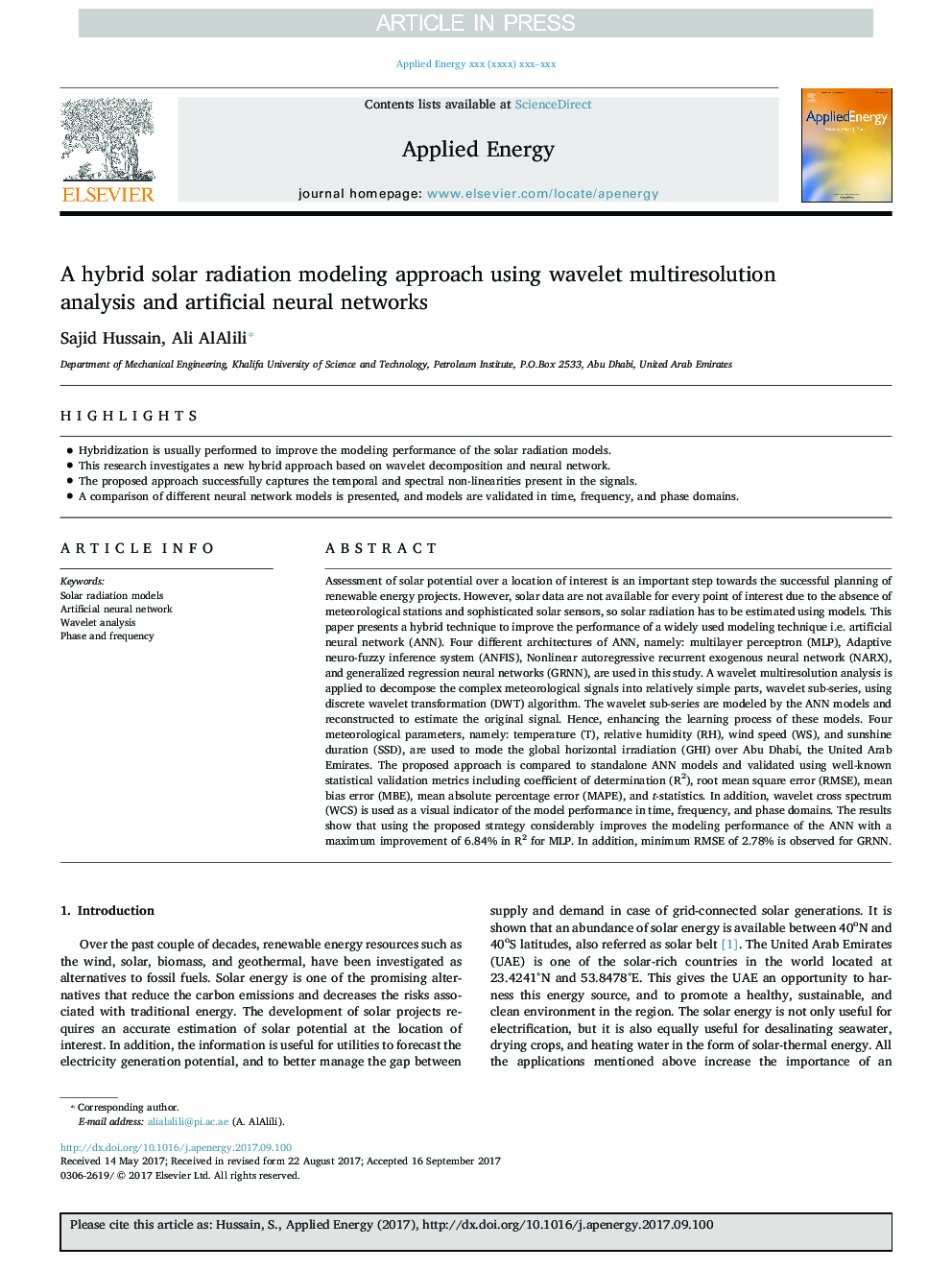| Article ID | Journal | Published Year | Pages | File Type |
|---|---|---|---|---|
| 6681708 | Applied Energy | 2017 | 11 Pages |
Abstract
Assessment of solar potential over a location of interest is an important step towards the successful planning of renewable energy projects. However, solar data are not available for every point of interest due to the absence of meteorological stations and sophisticated solar sensors, so solar radiation has to be estimated using models. This paper presents a hybrid technique to improve the performance of a widely used modeling technique i.e. artificial neural network (ANN). Four different architectures of ANN, namely: multilayer perceptron (MLP), Adaptive neuro-fuzzy inference system (ANFIS), Nonlinear autoregressive recurrent exogenous neural network (NARX), and generalized regression neural networks (GRNN), are used in this study. A wavelet multiresolution analysis is applied to decompose the complex meteorological signals into relatively simple parts, wavelet sub-series, using discrete wavelet transformation (DWT) algorithm. The wavelet sub-series are modeled by the ANN models and reconstructed to estimate the original signal. Hence, enhancing the learning process of these models. Four meteorological parameters, namely: temperature (T), relative humidity (RH), wind speed (WS), and sunshine duration (SSD), are used to mode the global horizontal irradiation (GHI) over Abu Dhabi, the United Arab Emirates. The proposed approach is compared to standalone ANN models and validated using well-known statistical validation metrics including coefficient of determination (R2), root mean square error (RMSE), mean bias error (MBE), mean absolute percentage error (MAPE), and t-statistics. In addition, wavelet cross spectrum (WCS) is used as a visual indicator of the model performance in time, frequency, and phase domains. The results show that using the proposed strategy considerably improves the modeling performance of the ANN with a maximum improvement of 6.84% in R2 for MLP. In addition, minimum RMSE of 2.78% is observed for GRNN.
Related Topics
Physical Sciences and Engineering
Energy
Energy Engineering and Power Technology
Authors
Sajid Hussain, Ali AlAlili,
